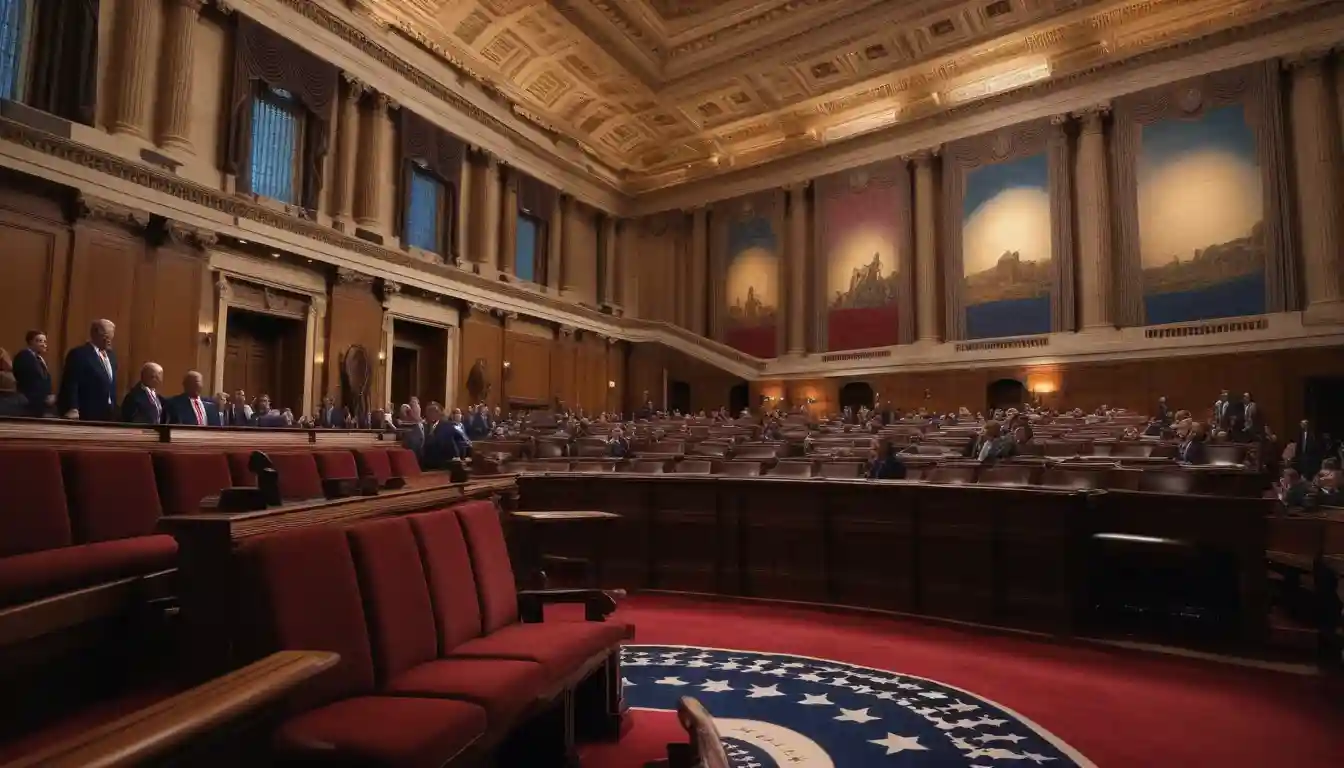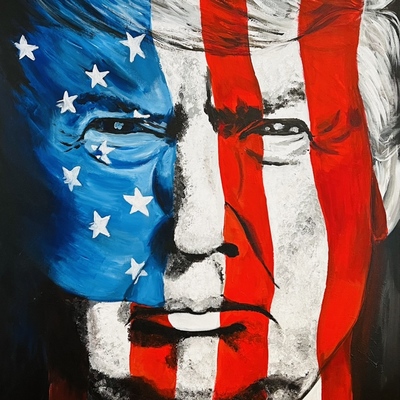
Congress Passes First Federal Stablecoin Regulation Bill as Major Banks Prepare Market Entry
Digital Dollar's New Dawn: Congress Unlocks Trillion-Dollar Stablecoin Market
Historic legislation positions America to dominate programmable money as traditional finance prepares for seismic shift
After nearly a decade of regulatory uncertainty, the United States has taken a decisive leap into the digital currency era. On July 17, 2025, Congress passed the Guiding and Establishing National Innovation for U.S. Stablecoins Act (GENIUS Act), establishing the first comprehensive federal framework for dollar-pegged digital assets that could fundamentally reshape global payments and challenge traditional banking.
The legislation, which now awaits President Donald Trump's signature, represents the culmination of intensive lobbying by the cryptocurrency industry and growing concern among policymakers that America was ceding digital dollar dominance to overseas jurisdictions. With the global stablecoin market exploding from $160 billion to over $230 billion in just six months, regulatory gaps have become increasingly untenable.

Wall Street's Digital Gold Rush Begins
The bill's passage has triggered immediate positioning among financial giants. Banking executives from JPMorgan Chase and Citigroup signaled their institutions' readiness to enter the stablecoin market, while technology behemoths including Amazon and Walmart are reportedly exploring digital payment projects that could bypass traditional card networks entirely.
The regulatory clarity arrives at a pivotal moment. Stablecoins—cryptocurrencies designed to maintain stable value by pegging to assets like the U.S. dollar—have evolved far beyond their original purpose as trading vehicles for crypto speculation. They now facilitate cross-border remittances, enable programmable business payments, and offer potential solutions to the costly inefficiencies plaguing international money transfers.
The Architecture of Digital Dollar Dominance
Under the GENIUS Act's framework, stablecoin issuers must maintain liquid, dollar-for-dollar reserves and provide monthly public disclosures of their asset compositions. Large issuers managing over $10 billion in assets will fall under federal oversight, while smaller operators may choose state-level regulation—a dual structure designed to balance innovation with systemic risk management.
The legislation mandates rigorous compliance with anti-money laundering and sanctions regulations, requires regular independent audits, and explicitly prohibits the payment of interest on stablecoins, distinguishing them from money market funds. Perhaps most significantly, the bill includes an outright ban on a Federal Reserve-issued central bank digital currency, effectively handing the digital dollar landscape to private enterprise.
Political Theater and Procedural Drama
The legislative journey revealed deep partisan tensions and intra-party conflicts. While the Senate passed the bill 68-30 in June, House proceedings descended into chaos when right-wing Republicans staged an unexpected rebellion, leading to the longest procedural vote in modern House history—lasting nearly 10 hours. Only intervention by President Trump and Speaker Mike Johnson ultimately secured passage with a 308-122 margin, as 102 Democrats joined nearly all Republicans.
The bill's most controversial provision exempts President Trump and his immediate family from congressional restrictions on profiting from stablecoins—a carve-out that generated significant partisan friction and raised questions about potential conflicts of interest given Trump's documented financial ties to cryptocurrency ventures.
Treasury Markets Brace for Structural Shift
The legislation's implications extend far beyond cryptocurrency markets. Financial analysts project that compliant stablecoin issuers will need to hold an additional $1 trillion in short-term Treasury securities by 2030, creating a massive captive demand that could fundamentally alter government borrowing dynamics and front-end yield curves.
This Treasury absorption could drain liquidity from money market funds and the Federal Reserve's overnight reverse repurchase facility, potentially easing quantitative tightening pressures while creating new systemic vulnerabilities. Market participants worry about potential fire-sale dynamics if stablecoins face massive redemption requests during financial stress, particularly given that stablecoin holders lack FDIC insurance protection.
Innovation Unleashed or Competition Stifled?
Industry reactions reveal a stark divide. Established players like Circle, which issues the USDC stablecoin, have championed the regulatory clarity as essential for institutional adoption. However, decentralized finance advocates and privacy-focused developers express concern that compliance costs and reporting requirements will consolidate market power among large, regulated institutions while stifling grassroots innovation.
Consumer advocacy groups have mounted fierce opposition, arguing the legislation "guts existing banking safeguards" while granting unprecedented powers to technology and finance giants. They point to the absence of deposit insurance and flexible redemption protections as potentially leaving consumers vulnerable to issuer failures or market disruptions.
The bill's anti-CBDC stance has drawn particular criticism from policy experts who argue that prohibiting a Federal Reserve digital currency could sacrifice America's technological leadership as other nations experiment with sovereign digital assets. This ideological positioning reflects broader political rhetoric around government surveillance and financial privacy, though critics contend it may handicap future monetary policy tools.
Market Concentration and Competitive Dynamics
The regulatory framework will likely trigger a significant reshuffling among existing stablecoin issuers. Offshore providers like Tether, which currently commands the largest market share, may face delisting pressure from U.S. exchanges as compliance requirements take effect. Conversely, U.S.-regulated alternatives could capture substantial market share while benefiting from enhanced institutional trust.
Small startups and decentralized projects face an uncertain future under the new regime. The requirement for daily-liquid collateral and monthly attestations effectively eliminates algorithmic stablecoin models while imposing compliance costs that may prove prohibitive for emerging players. This regulatory burden could accelerate market consolidation around major financial institutions with existing Treasury custody and audit capabilities.
Geopolitical Stakes and Dollar Supremacy
Beyond domestic market implications, the GENIUS Act represents a strategic play for global financial influence. By establishing clear rules for dollar-pegged digital assets, the United States aims to counter regulatory frameworks already implemented in the European Union, United Kingdom, Singapore, and Hong Kong. The legislation could cement the dollar's role in the emerging digital economy while attracting global demand for U.S. Treasury securities through stablecoin reserve requirements.
However, the bill's success in achieving these geopolitical objectives remains uncertain. Foreign jurisdictions may view the regulatory framework as protectionist, potentially accelerating efforts to develop alternative digital currency systems that bypass U.S. oversight entirely.
Investment Landscape Transformation
For sophisticated investors, the stablecoin regulatory clarity creates several compelling themes. Banking institutions with existing Treasury operations and global payment networks appear positioned to capitalize on new revenue streams from tokenized deposits and programmable money services. Conversely, traditional payment processors and remittance services face potential disruption from near-instant, low-cost digital transfers.
Blockchain infrastructure providers supporting compliant stablecoin networks may benefit from increased transaction volumes and fee generation. However, investors should carefully evaluate which platforms can meet evolving regulatory requirements while maintaining technical performance and security standards.
The Treasury market implications suggest potential opportunities in front-end yield curve trades, as captive stablecoin demand could create persistent richening pressure on bills relative to other money market instruments. Portfolio managers may need to adjust duration and liquidity management strategies as stablecoin-driven Treasury demand evolves.
Implementation and Evolution
President Trump's signature on the legislation appears virtually certain given his public advocacy for cryptocurrency innovation. However, the 18-month implementation timeline provides ample opportunity for additional regulatory clarification and potential legal challenges, particularly around the controversial conflict-of-interest provisions.
The broader cryptocurrency regulatory landscape remains in flux, with two additional bills addressing digital asset markets and central bank digital currency restrictions heading to the Senate. Industry observers anticipate a surge of new market entrants and rapid ecosystem expansion if the comprehensive regulatory framework takes effect as planned.
The GENIUS Act represents more than regulatory housekeeping—it signals America's commitment to digital financial leadership in an increasingly competitive global landscape. Whether this framework ultimately enhances financial innovation or simply shifts digital currency activity toward more permissive jurisdictions may determine the legislation's lasting legacy in the evolving monetary system.
Investment Thesis
| Category | Key Points |
|---|---|
| Regulatory Changes | - Single federal rule replaces state regimes; 1:1 collateral, no interest. - Anti-CBDC clause blocks Fed digital dollar. - Conflict-of-interest carve-out for Trump family. |
| Market Impact | - Stablecoin float: $260bn → $1-1.6tn by 2030. - $1tn incremental T-Bill demand, flattening short-end yield curve. - Offshore USDT share drops to <20%. |
| Winners | - Big banks (JPM, C, BAC), public blockchains (ETH, SOL), Treasury desks, reg-tech firms. |
| Losers | - Card networks (cross-border fees), offshore stablecoins (USDT), algorithmic stablecoins. |
| Monetary Policy | - Fed balance sheet shifts to bills; potential repo facility for issuers by 2027. |
| Key Risks | - OCC rule-making delays, state/federal arbitrage, legal challenges to interest ban. |
| Investment Theses | - Long ETH/SOL (settlement rails), JPM/C (bank tokenization), flattener trades, short remittance incumbents. |
| Scenarios (2026) | - Base (55%): $600bn float, bills −15bp. - Bull (25%): $900bn, bills −25bp. - Bear (20%): $350bn, legal delays. |
| Catalysts | - Aug 2025: Act signed. - Q4 2025: Collateral rules. - 2026: State charters, bank pilots. |
| Conviction Calls | - Stablecoins = digital eurodollar; banking oligopoly; short-term alpha in infrastructure; regulatory risk under-priced. |
Market participants should note that regulatory implementation timelines and competitive dynamics remain subject to change, and investment decisions should incorporate appropriate risk management and professional guidance.